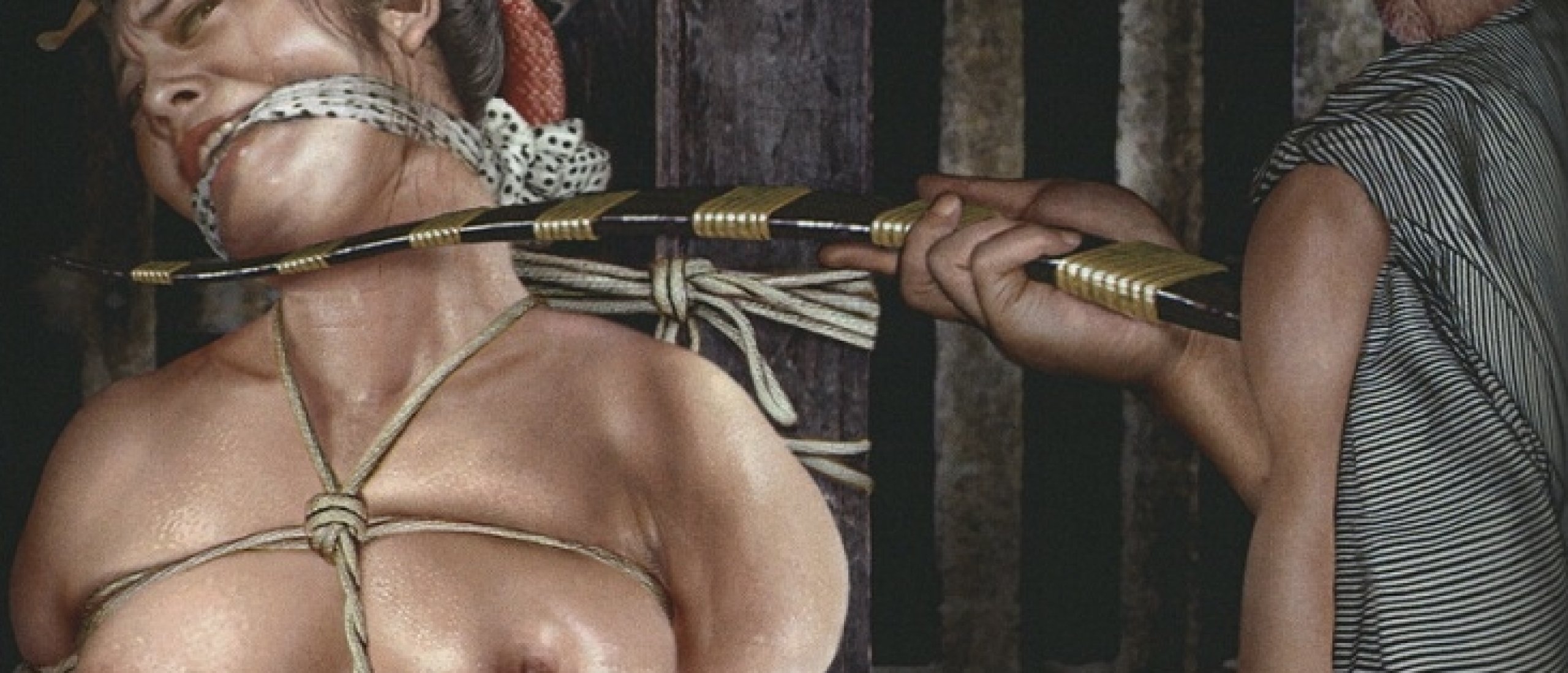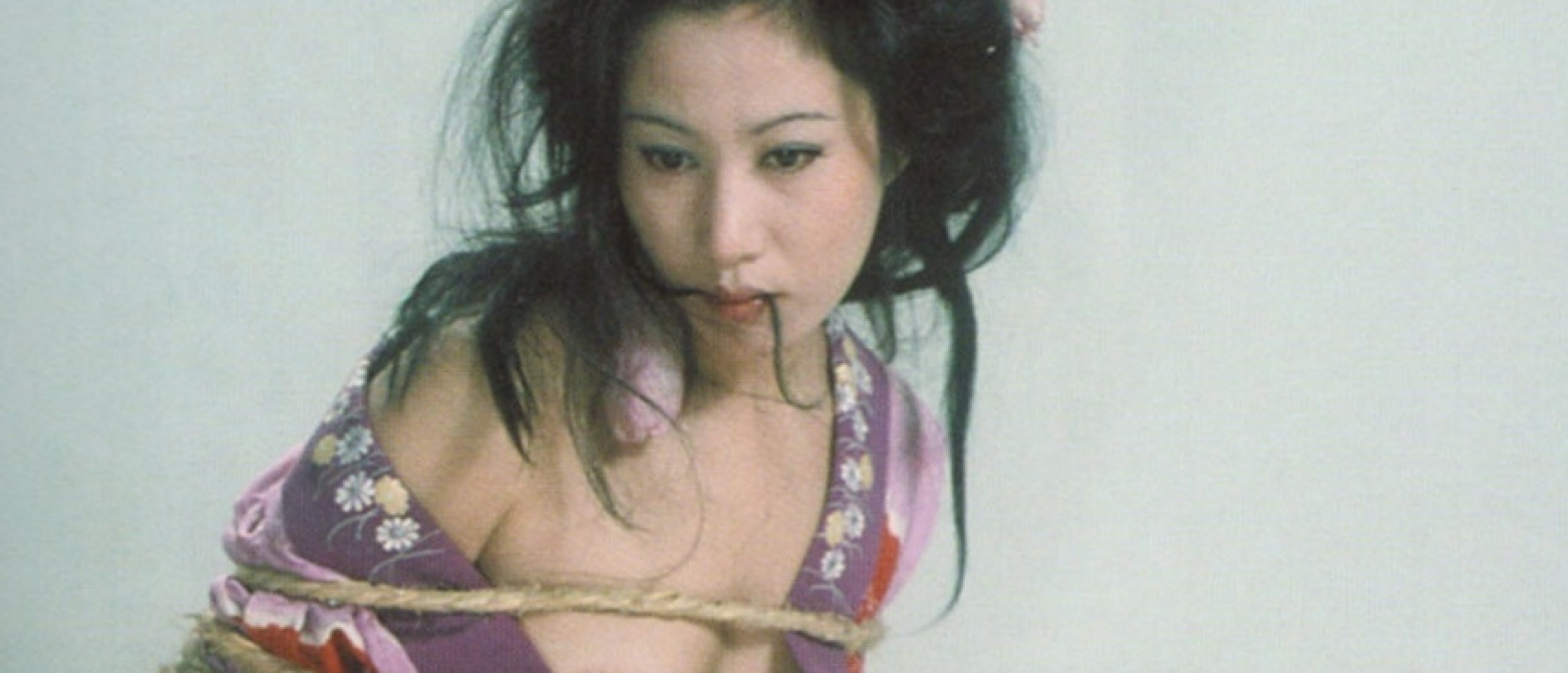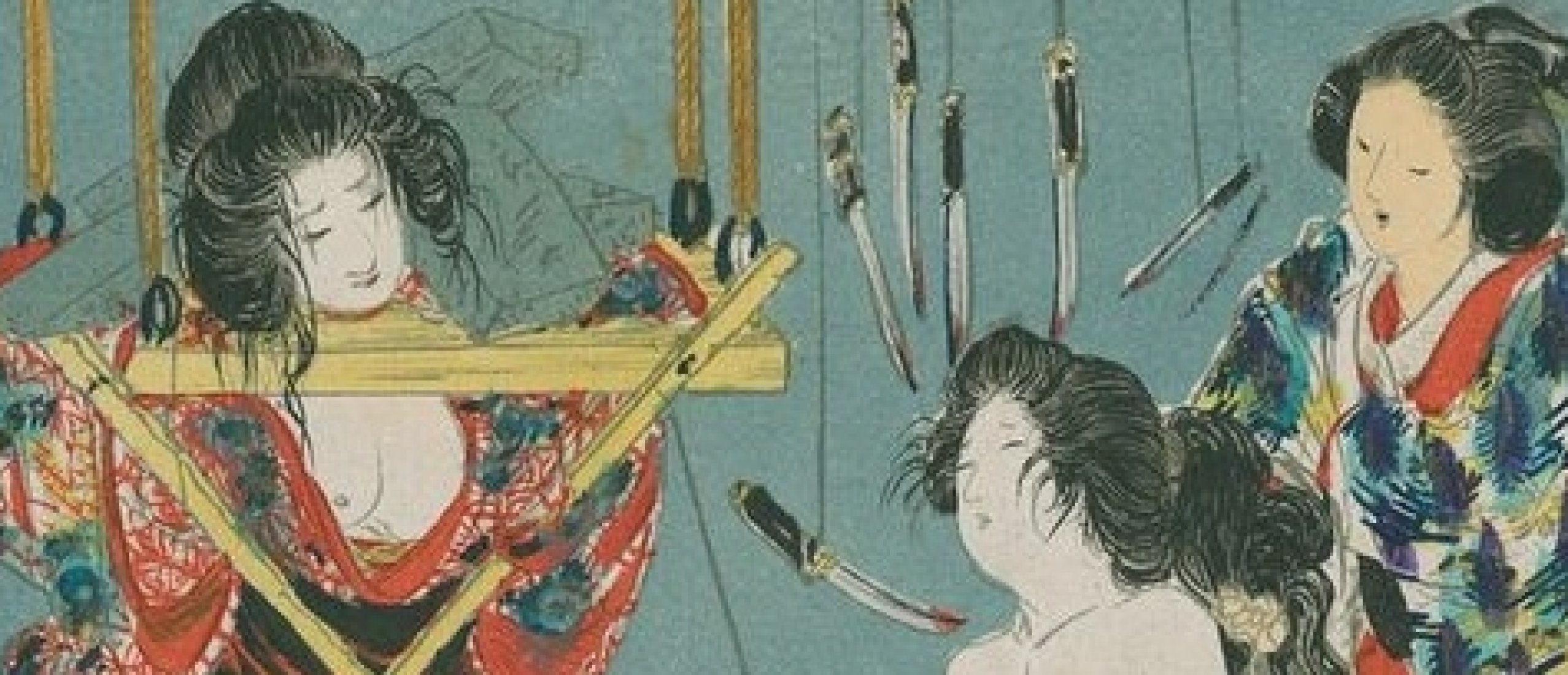
Ito Seiu's Women
For Ito Seiu, women were not just passions, but essential elements for the development of his photographs and drawings. In addition to several mistresses, Ito Seiu had three wives: Takeo (divorce 1919), Kise Sahara (divorce 1925) and Toshiko. With Kise Sahara, perhaps the artist produced his most impactful images. In 1919, he asked photographer YuuKa to take pictures of snow tortures with Kise Sahara in his garden. As early as 1920, he made his first attempt to suspend her by ropes.

Fig.1.
Suffering In Snow
In 1921, with Kise Sahara pregnant, he created Rinketsu bijin Sakasa Tsuri no Shashin (Photo of Inverted Suspension of a Beautiful Woman in Her Last Month of Pregnancy). In 1923, he produced Yukizeme (Woman suffering in snow) (Fig. 01), in a farmhouse borrowed from his student Gajou Sakamoto in Shimotakaido. There, Ito Seiu asked photographer Raisui Suzuki to take pictures of Kise Sahara tied up in the snow. Women for Ito Seiu are the equivalent of what a painting is for the painter, because it is from their bodies that the act of tying takes on meaning. Thanks to the consent of his wives and mistresses, the artist sought to break the boundaries that separate the “I” from the other, by imprinting on the body what he called “beauty in suffering”.

Fig.2.
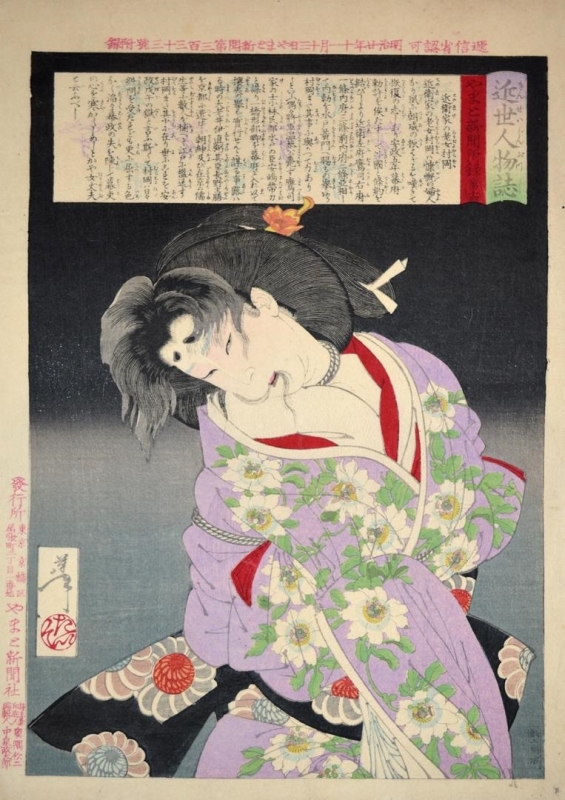
Fig.3.
Between Photography and Painting
To the extent that the photos serve for Ito Seiu as a starting point for his paintings, there is no denying that they are also for him a study of the pain and pleasure achieved in extreme conditions as in Yukizeme. When we compare photo with the painting (Fig. 02) generated from it, we realize the elements that connect them, at the same time, distance them. In this particular photo, as we cannot see the model's face, the equivalent account of when we witness a performance survives, while, in the painting, the reference to shunga is evidenced through vivid colors, the simplicity of the setting, where the body assumes a subdued pose in the midst of an event from which we do not know what will result.

Fig.4.

Fig.5.

Fig.6.
Exposed Breasts
If in the shunga the story, through the text in the image or the knowledge of cultural references, is an element of the composition, without which the image loses its meaning, as we can see in Tsukioka Yoshitoshi 's engraving depicting the torture of a politically dissident woman titled “Muraoka, Head Lady-in-waiting of the Konoe clan Bound with Rope " (Fig. 03) from the series “Personalities of Recent Times” published in 1887, in some drawings by Ito Seiu, there is no need to make use of it, as what prevails is the way in which the subjugated body prevails in the composition (Fig. 04). Thus, while movement is frozen in the photo, it, in the paintings of Ito Seiu, is insinuated by the way the body dialogues with the scenario in which it is inserted (Fig. 05 and 06), as we can see in the painting where two women, one fully dressed and the other with exposed breasts, their bodies are shaken by the swing of the bamboos to which they are tied (Fig. 07).
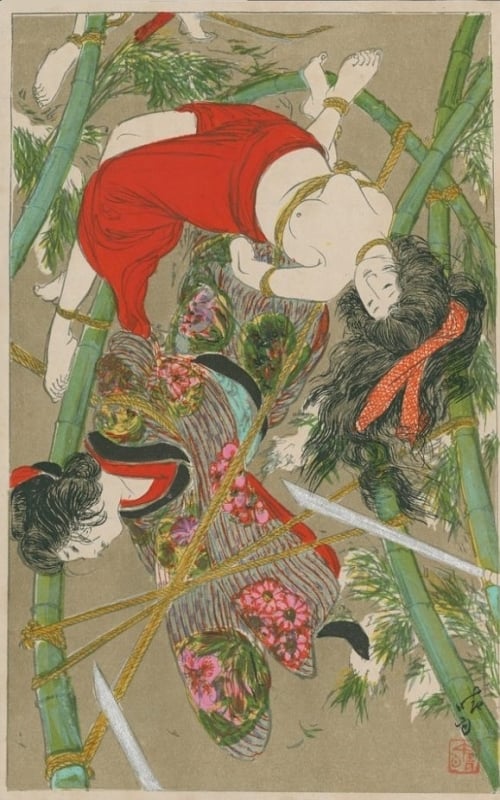
Fig.7.
Become a Premium member now and discover the extended version which is more that twice as long, including Seiu's dialogue with Buddhism, context to his images of tied women, the concept of kusōzu, pictures of the nine stages of a decaying corpse, extensive descriptions of his paintings Fallen Castle , View of the Nine Stages, and The Shimabara Rebellion, and much more ...!
Click HERE for the third part of our journey into Ito Seiu's bondage secrets






